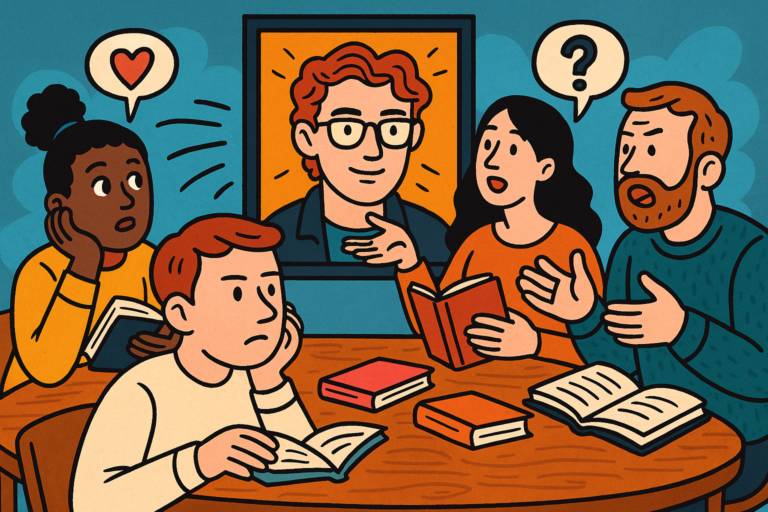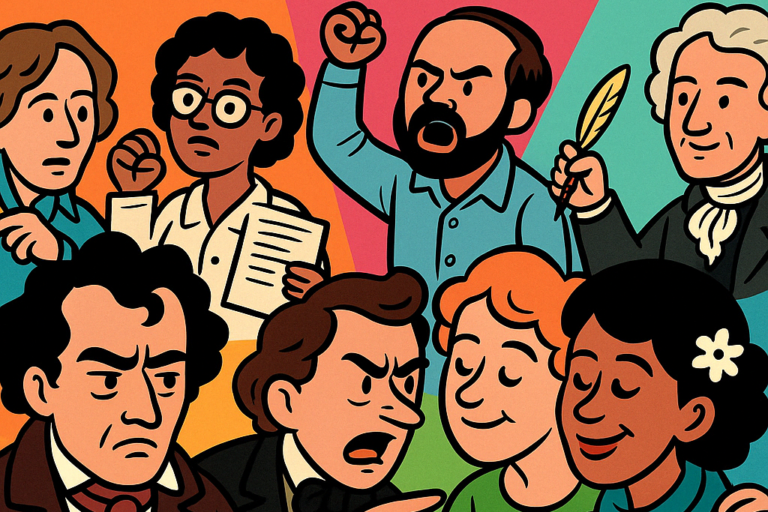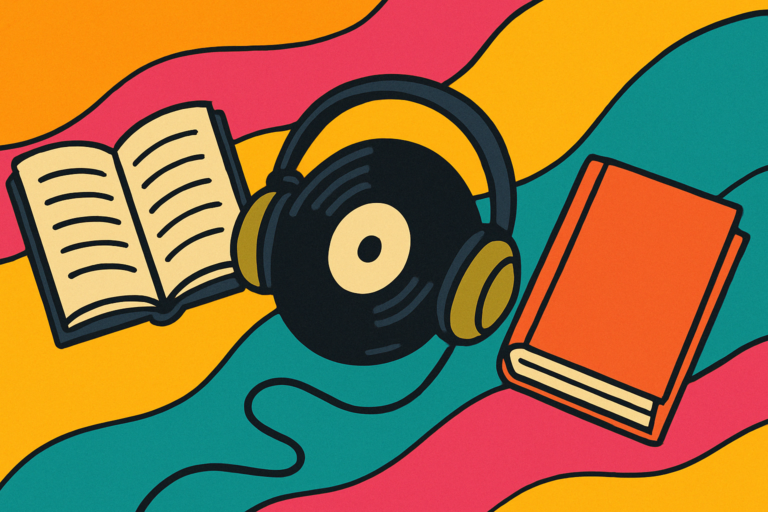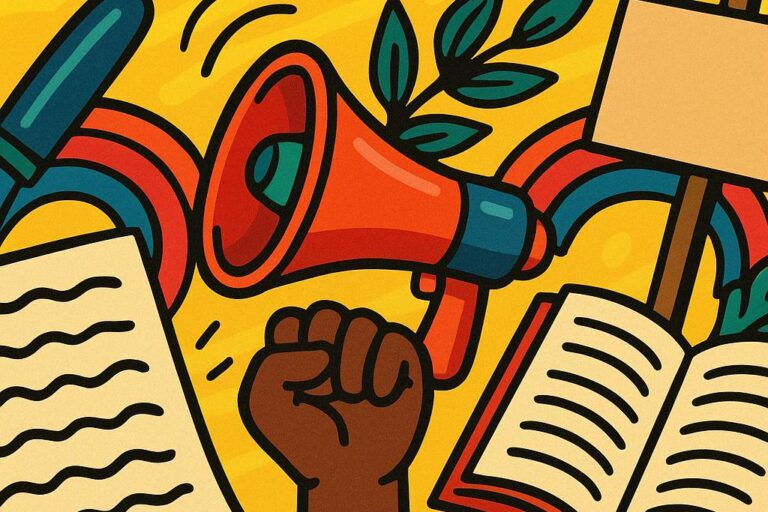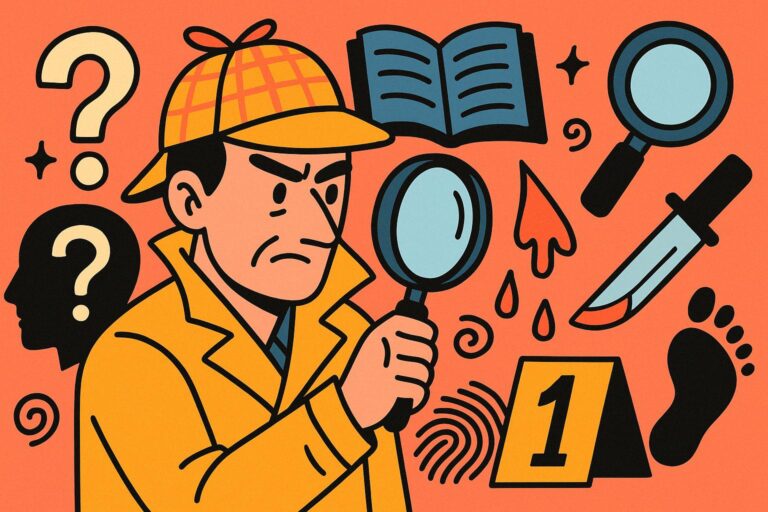How Can A Novel Perfectly Capture The Spirit Of The Era

One of the things that fascinates me most about novels is how they act like time capsules—but not in a dusty, museum-piece kind of way.
They don’t just depict the past; they pulse with it. A great novel doesn’t just reference its era—it feels like it was grown out of it, organically.
When I first read something like The Great Gatsby or Beloved, I wasn’t just getting a story—I was getting the texture of the 1920s or the deep psychic scars of post-slavery America.
So, what actually lets a novel capture the spirit of an era?
Not just represent it, but embody it in a way that feels inevitable? That’s what I wanted to dig into. And as I went deeper, especially reading how different literary movements did this across time, I started spotting patterns—some subtle, some loud. Let’s break them down and really look at the mechanics.
A Novel Captures the Spirit of the Times in Shape and Story
We often talk about novels as reflecting their time, but the best ones don’t just reflect—they absorb. They’re shaped by the cultural weather systems of their moment, from narrative structure to word choice. A novel that feels like its time doesn’t just tell us what happened—it thinks like the people of that time thought.
That distinction, I think, is where the magic lies.
Narrative Style as Historical Echo
Let’s start with form. I was struck by how narrative techniques often mirror the mindset of a historical moment.
Take modernism: stream-of-consciousness wasn’t just a stylistic whim. Writers like Virginia Woolf and James Joyce were grappling with the fragmentation of identity in a post-WWI world where old certainties had collapsed. The form itself—the erratic jumps, the internal monologues—is the historical crisis made literary.
Or jump to postmodernism: fragmented, nonlinear, self-aware narratives that emerged after WWII. These weren’t just quirky experiments—they were reacting to a world where meta-narratives had crumbled, where distrust of authority ran deep. Think Slaughterhouse-Five or White Noise.
The forms are responses to their cultural conditions, not just artistic choices.
Language as Temporal Signature
Another thing I noticed while digging into this is how language itself gives the era away. It’s not just about slang or vocabulary—though, yes, calling someone a “hep cat” or “yuppie” anchors you in time fast.
It’s about rhythm, syntax, even punctuation. Compare the long, looping sentences of 19th-century realism (George Eliot, for example) with the clipped, anxious dialogue of minimalist ‘80s fiction (like Jay McInerney or Raymond Carver).
The sentence structure tells you something about how people experienced time, urgency, and connection.
Themes and Cultural Preoccupations
Of course, the big themes are a dead giveaway too. In postwar American fiction, for instance, you see this deep vein of moral ambiguity—in characters, in institutions, in outcomes.
It’s no accident that noir and anti-heroes bloomed during this time (The Catcher in the Rye, Invisible Man). There’s this constant negotiation with loss—of innocence, of purpose, of belief.
Meanwhile, in late 20th-century speculative fiction, tech becomes an obsession.
Think of William Gibson’s Neuromancer—it’s soaked in cybernetic imagery and digital anxiety. Not only is the theme futuristic, but the tone—cool, detached, a bit paranoid—feels like an anticipatory echo of the internet age.
Character Psychology and Social Roles
Characters, too, behave in ways that reflect their era’s norms and anxieties. One of the things I found interesting is how internal conflict often mirrors collective psychological tension.
A good example is the way female characters in early 20th-century novels negotiate identity—like Lily Bart in The House of Mirth or Clarissa Dalloway in Mrs. Dalloway.
Their personal dilemmas are essentially gendered, economic, and class-based crises being worked out in individual psyches.
Or look at the rise of the “lost” male protagonist in mid-century American fiction—Bellow’s Herzog or Roth’s Zuckerman—grappling with existential dread, cultural displacement, or professional emasculation.
These characters aren’t just fictional—they’re symptoms of their time.
Key Elements That Anchor a Novel in Its Era (List-Based)
There’s something thrilling about reading a novel that makes you feel like you’ve landed somewhere in time—like you’re eavesdropping on the conversations, wearing the clothes, breathing in the smog or salt air of a specific historical moment.
But it’s not just about setting. It’s about a layered, intentional integration of cultural signifiers, ideological undercurrents, and emotional tone.
Over time, I started spotting recurring elements that signal when a novel really belongs to its era—not just chronologically, but emotionally, socially, politically.
So, here’s my working checklist.
Think of it as a kind of diagnostic tool for spotting novels that don’t just depict their time—they embody it.
1. Cultural References
Let’s start with the obvious. Music, fashion, food, slang—these are the juicy surface details that instantly ground a story in time. But when done well, they’re not just decorative. They’re doing narrative work.
Think of A Visit from the Goon Squad by Jennifer Egan. The punk music scene of the late ‘70s and early ‘80s isn’t just background noise—it shapes characters’ decisions, social mobility, and sense of self. Or Zadie Smith’s White Teeth, which immerses us in multicultural London, full of hip-hop, Caribbean food, secondhand clothes, and layered dialects.
Used intentionally, cultural references become emotional shorthand. A character wearing a Nirvana tee in 1993 carries a different social code than someone wearing it ironically in 2023.
2. Political and Economic Backdrop
This one’s a biggie—and it’s often underestimated. We tend to think of politics as the “serious” stuff layered around the story, but in era-defining fiction, it’s deeply embedded in the engine of the plot.
Take The Grapes of Wrath—you can’t separate the Joads’ story from the Great Depression and Dust Bowl. Or look at American Psycho—Patrick Bateman’s psychopathy is exaggerated, yes, but it’s clearly a grotesque mirror of late capitalist nihilism in 1980s Wall Street culture.
These novels let political and economic conditions pressure characters, not just color the setting. When the market crashes or a war breaks out, it does something to the protagonist’s life trajectory.
3. Technology and Media Presence
If you want to know how plugged into its time a novel is, look at how it handles technology. Does it treat it as background? Or is it part of the texture of daily life, the way characters experience time, relationships, and reality?
Take Super Sad True Love Story by Gary Shteyngart—set in a hyper-mediated dystopia that’s almost absurdly exaggerated, but also eerily predictive of our obsession with screens and social metrics. Or the constant media noise in White Noise—TV, radio, supermarket announcements—all crashing in on the characters and shaping their sense of mortality.
Even something like pay phones vs. cell phones makes a difference. In The Secret History, Donna Tartt’s 1990s campus thriller, the delay in communication builds suspense—a delay that wouldn’t exist today. That’s not just a plot device; it’s a temporal signature.
4. Spatial Realism
This is one of my favorite details—how a novel constructs space. Cities are never neutral. Neither are suburbs, countrysides, or housing projects. The way a novel maps space tells us what kind of world its characters are navigating.
In Mrs. Dalloway, we move through post-WWI London with Clarissa—every street is charged with social history and personal memory. In Never Let Me Go, Ishiguro creates a cold, institutional version of England that mirrors the ethical emptiness of the world his characters inhabit. And in Trainspotting, Edinburgh isn’t just a backdrop—it’s a brutal, breathless, working-class world that fuels everything about the story’s voice and rhythm.
Spatial realism grounds a novel in its material reality—from architecture and transportation to who gets to walk where, and why.
5. Social Tensions
If you want to see the pressure points of an era, look at its social tensions. Race, class, gender, immigration, sexuality—all these shape how characters move through the world, often more than the plot does.
The God of Small Things is a great example. It’s deeply embedded in caste politics, even though it’s technically a love story and a tragedy. Or Colson Whitehead’s The Underground Railroad—a reimagined history, yes, but one that reveals the persistent hauntings of systemic racism in a way no realist novel could quite achieve.
Novels that capture their time well don’t flinch from these tensions. They often live in the cracks between societal expectations and personal freedom.
6. Tone and Mood
This one’s sneakier, but just as crucial. Tone isn’t just about style—it’s about how a novel emotionally metabolizes its moment. Is it hopeful? Cynical? Satirical? Grieving?
Think of how the ‘60s counterculture optimism is all over Kerouac’s On the Road, or how the jittery, paranoid mood of the Cold War era is baked into John le Carré’s The Spy Who Came in from the Cold. More recently, Ottessa Moshfegh’s My Year of Rest and Relaxation nails the post-9/11 millennial ennui—cynical, disconnected, ironic to the point of being nihilistic.
Tone often tells us more than plot ever could.
7. Ideological Contours
And finally, the big one: what are the contested truths of the novel’s moment? Which beliefs are being challenged, defended, or eroded?
George Orwell’s 1984 wasn’t just about Big Brother. It was a diagnosis of a moment in which truth itself was under siege.
In The Handmaid’s Tale, Atwood unpacks the erosion of women’s rights through speculative extremity, but she’s also responding to very real historical and political debates of the 1980s.
When a novel wrestles with the dominant ideologies of its time, it’s not just reflecting them—it’s participating in the fight over what truth is. That’s powerful.
When Fiction Becomes History: Influence Beyond the Page
Here’s where things get really interesting. Some novels don’t just capture their moment—they end up shaping it.
They become part of the historical narrative, not just through literary acclaim, but by altering how people understand the world around them.
These are the books that stop being “just fiction” and start reverberating through culture, politics, and collective memory.
Fiction as Cultural Intervention
Let’s take Uncle Tom’s Cabin.
Whatever your feelings about its prose or moral complexity, its historical impact is undeniable. Published in 1852, it galvanized abolitionist sentiment in a way that no political pamphlet could.
Abraham Lincoln allegedly called Harriet Beecher Stowe “the little lady who started this great war.” Even if apocryphal, that quote reflects how deeply fiction can embed itself into the social fabric.
Or The Jungle by Upton Sinclair—he meant to expose labor conditions, but what hit readers hardest was the grotesque state of the meat industry. That novel led directly to the Pure Food and Drug Act of 1906.
Sometimes a novel doesn’t just tell history—it makes it.
The Recursive Loop: Literature and Collective Consciousness
What’s fascinating is how novels and culture loop back into each other. A novel emerges from its context, but it also reshapes that context.
Orwell didn’t invent surveillance paranoia—but 1984 gave us the language to talk about it: “doublethink,” “thoughtcrime,” “Big Brother.” Today, we still use those terms to critique authoritarianism and media manipulation.
Toni Morrison’s Beloved didn’t just tell a ghost story—it reshaped national memory around slavery and its aftermath. It offered a language of trauma, haunting, and reparation that academic historians have since leaned on.
So, the novel isn’t just a mirror. It’s a prism. It bends and refracts the light of a historical moment in ways we might only fully understand decades later.
Reception: Then vs. Now
Here’s something else I found fascinating while researching this: novels often mean different things to different generations. The Catcher in the Rye felt revolutionary to its first readers.
Now?
For some, Holden just seems whiny. But for others, he’s a symbol of adolescent alienation in postwar conformity. The text didn’t change—but we did.
The reception of a novel often reveals the evolving moral landscape of its readership. What was once transgressive can become mainstream. What felt universal may now seem narrow or flawed. That tension is part of what keeps literature alive—it’s always in dialogue with the now.
Canonization as Historical Freezing
Ever wonder why certain novels become “classics”? It’s not always because they’re the best—it’s because they captured something deep and resonant about a particular moment, often in a way no one else quite did.
To Kill a Mockingbird became a classroom staple not just for its style, but because it offered a moral compass during the Civil Rights era. Mrs. Dalloway became a modernist icon partly because it captured postwar psychological fragmentation with such uncanny grace.
Canonization, when you really look at it, is often society’s way of saying: this book got us. This book got our era. And even if the era passes, the resonance lingers.
Final Thoughts
So yeah—when a novel captures the spirit of the era, it’s not just doing period cosplay. It’s doing deep narrative work, metabolizing culture, conflict, and consciousness into something emotionally real.
The best ones don’t just tell us where we’ve been. They help us figure out where we are—and sometimes, terrifyingly, where we’re going.
Thanks for nerding out with me. If you’ve got examples that blew your mind in this way, I’d love to hear ’em.
